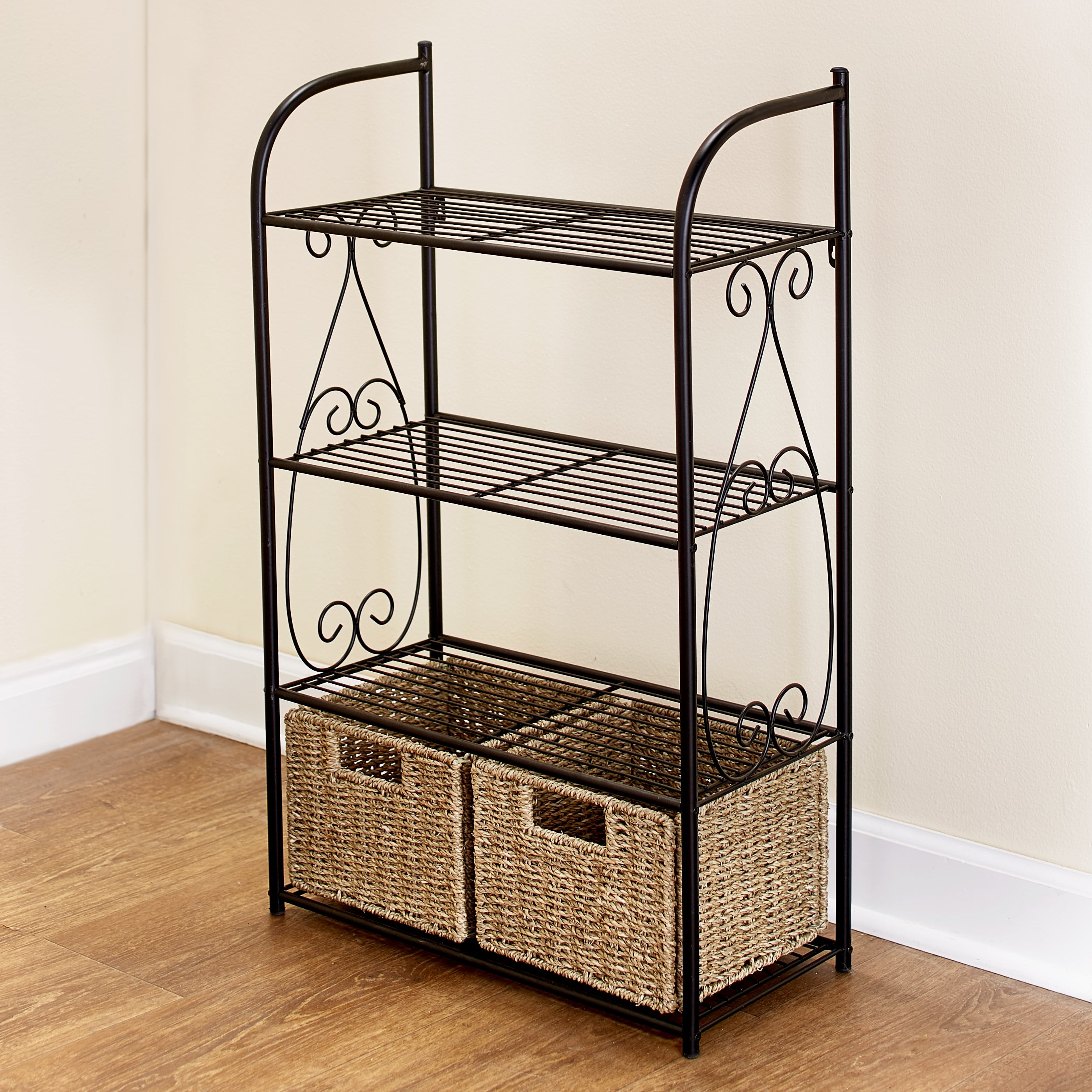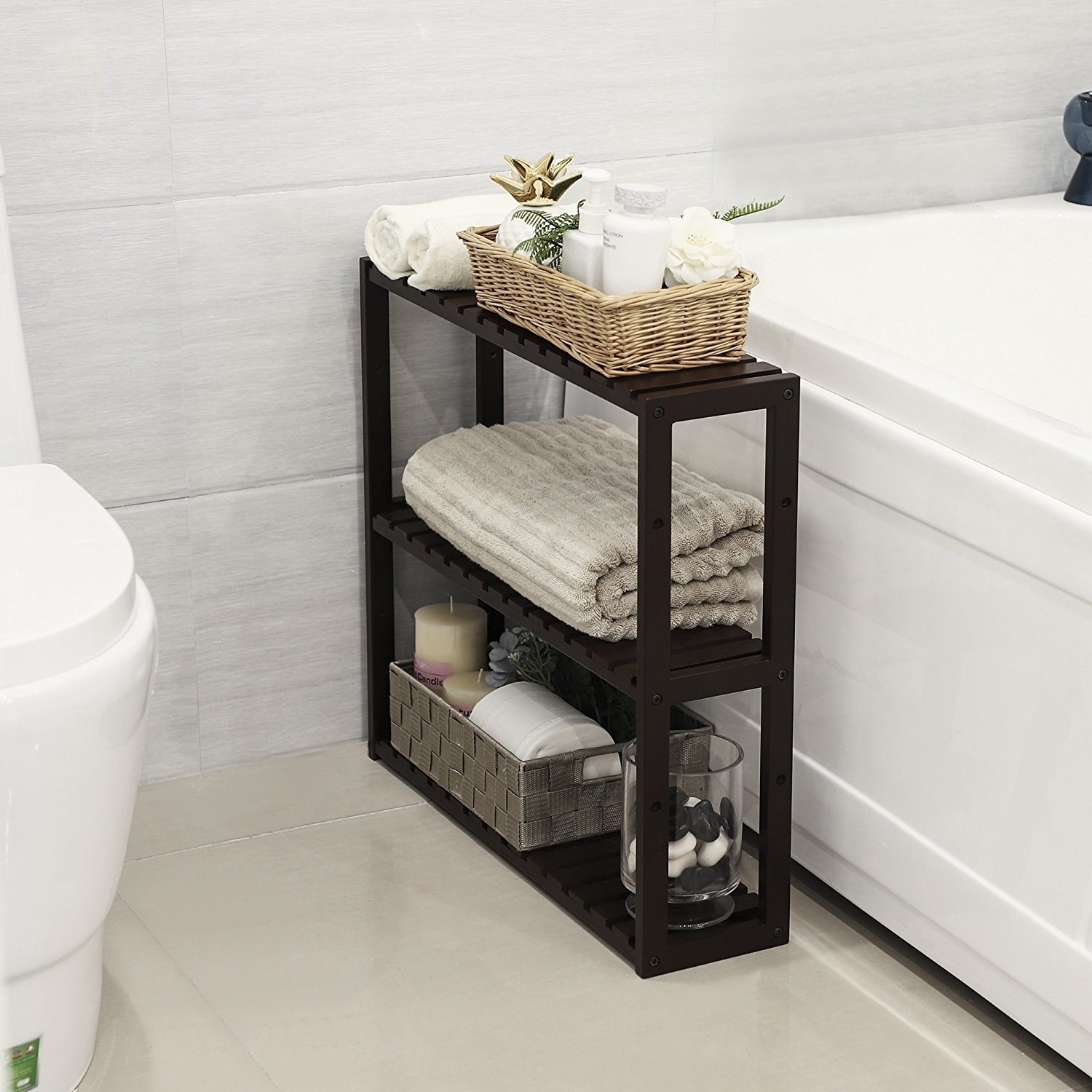Benefits of Bathroom Wire Storage Racks

Bathroom wire storage racks are a practical and versatile solution for maximizing space and keeping your bathroom organized. Their open design allows for easy access to items, while their sturdy construction ensures durability and longevity.
Space-Saving Advantages
Wire storage racks are particularly advantageous in smaller bathrooms where space is limited. Their open design minimizes visual clutter, making the bathroom appear larger and more spacious. The vertical orientation of wire racks maximizes floor space, allowing for more efficient use of the available area. For example, a corner wire rack can effectively utilize an often-unused space in a bathroom.
Enhancing Bathroom Organization
Wire storage racks are excellent for organizing a variety of bathroom essentials, such as toiletries, towels, cleaning supplies, and medications. The open design makes it easy to see and access items, reducing the need to dig through cluttered cabinets or drawers. By creating designated areas for different items, wire racks help to maintain a sense of order and streamline daily routines.
Durability and Longevity
Wire storage racks are typically constructed from durable materials like steel or chrome, making them resistant to rust and corrosion. This is especially important in a bathroom environment where humidity and moisture are prevalent. The open design of wire racks also allows for air circulation, preventing the buildup of moisture and mildew.
Advantages over Other Bathroom Storage Solutions
Compared to other bathroom storage solutions, wire racks offer several advantages:
- Cost-effectiveness: Wire storage racks are generally more affordable than shelves, cabinets, or drawers.
- Versatility: Wire racks can be easily customized to fit different bathroom layouts and storage needs. They can be stacked, hung, or mounted on walls, providing flexibility in arrangement.
- Easy Maintenance: Wire racks are easy to clean and maintain. Their open design allows for easy access to all surfaces, making it simple to wipe away dust and dirt.
Types of Bathroom Wire Storage Racks

Bathroom wire storage racks are a versatile solution for maximizing space and organizing bathroom essentials. They are available in various styles, sizes, and configurations, offering a suitable option for every bathroom layout and storage need.
Wall-Mounted Wire Storage Racks
Wall-mounted wire storage racks are an excellent choice for maximizing space in smaller bathrooms. They are typically installed on walls, eliminating the need for floor space. These racks come in various designs, including single-tier, multi-tier, and corner units. They are often equipped with adjustable shelves, hooks, and baskets, allowing for flexible storage solutions. Wall-mounted wire storage racks are typically made from durable, rust-resistant materials like steel or chrome. They are easy to install and can be adjusted or moved as needed.
Freestanding Wire Storage Racks
Freestanding wire storage racks offer a more mobile and flexible storage solution. These racks are typically made from durable, lightweight materials such as steel or aluminum. They can be easily moved around the bathroom to accommodate different storage needs. Freestanding wire storage racks are often available in various sizes and configurations, including single-tier, multi-tier, and rolling units. They are also equipped with adjustable shelves, hooks, and baskets, providing versatility in storage options.
Corner Wire Storage Racks, Bathroom wire storage racks
Corner wire storage racks are a space-saving solution for maximizing storage in tight corners. These racks are designed to fit snugly in corners, utilizing often-unused space. They are available in various sizes and configurations, including single-tier, multi-tier, and shelves with additional hooks or baskets. Corner wire storage racks are typically made from durable, rust-resistant materials such as steel or chrome. They are easy to assemble and install, and can be adjusted or moved as needed.
| Type of Wire Storage Rack | Pros | Cons |
|---|---|---|
| Wall-Mounted |
|
|
| Freestanding |
|
|
| Corner |
|
|
Examples of Wire Storage Racks for Different Bathroom Needs
- Towel Storage: Wall-mounted wire storage racks with adjustable shelves and hooks are ideal for storing towels, hand towels, and bathrobes.
- Toiletries: Freestanding wire storage racks with multiple tiers and baskets can organize toiletries, cosmetics, and other bathroom essentials.
- Cleaning Supplies: Corner wire storage racks with adjustable shelves and baskets can accommodate cleaning supplies, mops, brooms, and other cleaning equipment.
Installing and Maintaining Bathroom Wire Storage Racks

Installing and maintaining bathroom wire storage racks is crucial for ensuring their functionality and longevity. This involves choosing the right location, performing proper installation, and implementing regular cleaning and maintenance practices.
Installing Wall-Mounted Wire Storage Racks
Installing wall-mounted wire storage racks requires careful planning and execution to ensure stability and safety.
- Gather the necessary tools and materials: These include a stud finder, level, pencil, drill, drill bits, screwdriver, wall anchors (if necessary), screws, and the wire storage rack itself.
- Choose the optimal location: Consider factors like proximity to plumbing, electrical outlets, and existing fixtures. Ensure that the chosen location provides sufficient space for the rack and easy access to its contents.
- Mark the installation points: Use the stud finder to locate wall studs for secure mounting. Mark the installation points on the wall using a pencil and level to ensure the rack is installed straight.
- Drill pilot holes: Drill pilot holes at the marked points using a drill bit slightly smaller than the screws. This will prevent the wood from splitting.
- Install wall anchors (if necessary): If installing the rack on drywall or other non-stud surfaces, use appropriate wall anchors for additional support.
- Attach the wire storage rack: Align the rack with the marked points and secure it to the wall using the screws. Ensure the rack is firmly attached and level.
- Test the rack’s stability: After installation, gently pull or push the rack to ensure it is securely mounted and stable.
Choosing the Optimal Location
The optimal location for wire storage racks in a bathroom depends on factors like space availability and functionality.
- Maximize space utilization: Utilize vertical space by installing racks above the toilet, sink, or shower. This helps to keep the floor clear and create a more organized bathroom environment.
- Consider accessibility: Choose locations that provide easy access to the storage rack’s contents. For example, a rack near the sink is convenient for storing toiletries, while a rack near the shower can hold towels and bath accessories.
- Avoid obstructing traffic flow: Ensure the rack is not placed in a way that blocks the movement of people or hinders the use of other bathroom fixtures.
- Utilize corners: Corner wire storage racks can efficiently utilize otherwise unused space in a bathroom. These racks are designed to fit snugly in corners, maximizing storage space while minimizing the footprint.
Regular Cleaning and Maintenance
Regular cleaning and maintenance are essential to ensure the longevity and functionality of wire storage racks.
- Dust and wipe down regularly: Use a damp cloth or a mild cleaning solution to wipe down the rack’s surface and remove dust and grime. This helps to prevent the accumulation of dirt and maintain a clean and hygienic bathroom environment.
- Check for loose screws and bolts: Regularly check for loose screws or bolts that may need tightening. This ensures the rack remains securely mounted and prevents accidental falling or damage.
- Inspect for signs of rust or corrosion: In humid bathroom environments, wire storage racks are prone to rust and corrosion. Regularly inspect the rack for any signs of rust or corrosion and address them promptly to prevent further damage.
- Avoid overloading the rack: Ensure the rack is not overloaded with heavy items. Overloading can cause the rack to sag, bend, or even collapse, leading to damage or injury.
Preventing Rust and Corrosion
Preventing rust and corrosion is crucial for maintaining the longevity of wire storage racks in a humid bathroom environment.
- Choose rust-resistant materials: Opt for wire storage racks made from rust-resistant materials like stainless steel or galvanized steel. These materials are designed to withstand moisture and prevent rust formation.
- Ensure proper ventilation: Ensure adequate ventilation in the bathroom to reduce humidity levels. This helps to minimize moisture exposure to the rack and reduce the risk of rust and corrosion.
- Apply a protective coating: Consider applying a protective coating like clear lacquer or sealant to the rack’s surface. This creates a barrier against moisture and helps to prevent rust and corrosion.
- Dry the rack after cleaning: After cleaning the rack, ensure it is thoroughly dried before storing it back in the bathroom. This prevents moisture from accumulating and contributing to rust formation.
